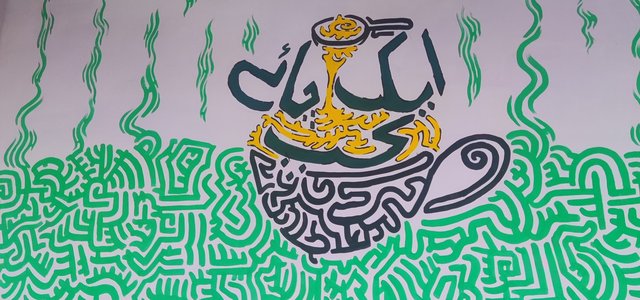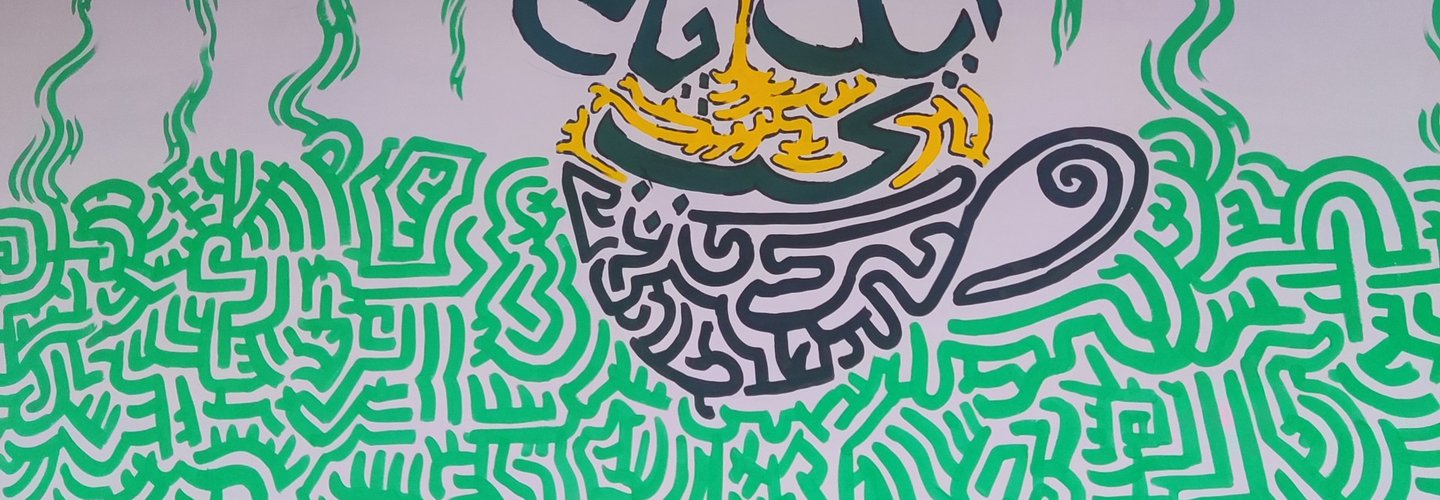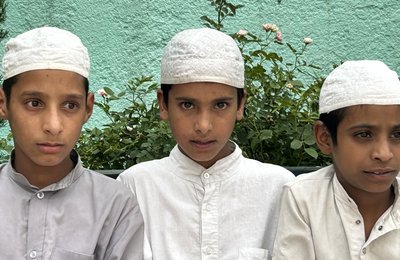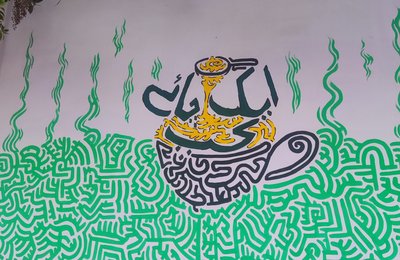The power of creative expression in peace messaging
Naheed Israr highlights the advantages of creativity in peace messaging, sharing the experiences of local peacebuilders in Pakistan.
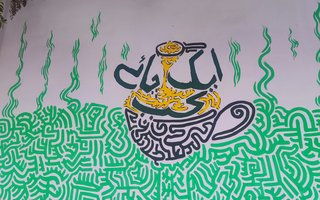
The mainstream understanding of peace is often seen as the absence of conflict, but in my experience and that of my colleagues, it is far more complex and multifaceted. It encompasses societal harmony, individual wellbeing, justice, and equity, and operates on different personal, communal, national, and global levels.
Cultural, historical, and social contexts deeply influence peace. To sustain peace, it is crucial to address these dynamics holistically, ensuring that it resonates with people’s lived experiences and aspirations.
One of the steps towards a holistic peacebuilding approach is Peace Messaging. The use of language, stories, and communication strategies to promote peace, nonviolence, mutual respect, and social cohesion. It is not just about preaching calm or calling for an end to violence, it’s about shaping narratives that influence how people perceive and engage with conflict, diversity, justice, and reconciliation.
Through peace messaging, local peacebuilders can connect people with the ideas, values, and actions necessary to build a harmonious society. By fostering understanding and empathy, it challenges divisive narratives and promotes collective action for a better future.
But how can we deliver a peace message that could challenge hostile narratives while resonating with a diverse audience? This is where creative expression comes in.
The role of creative expression in peace messaging
Unlike conventional, information-heavy lectures or training, creative expression has always been a powerful tool for widely spreading messages and building narratives among the masses. Expressive art like theatre, music, graffiti, or literature engages people on an emotional and imaginative level and connects the audience with a message of peace and unity in a personal and impactful way.
Peace messaging through creative expression is not a new practice; it has been instrumental for centuries in delivering messages and constructing narratives that resonate deeply within societies. From ancient storytelling traditions to songs of protest and healing, art has provided a platform for people to share their struggles, hopes, and visions for a better world. Expressive messaging allows the channelling of complex emotions and fosters solidarity, empathy, and collective action in ways that traditional methods cannot.
Interestingly, creative expression does all this while transcending language, geography and cultural differences.
Creative peace messaging in Pakistan
Pakistan, has a history of storytelling, music, and other forms of expression to promote peace and harmony, such as Sufi poets Buleh Shah and Shah Abdul Latif Bhittai emphasising love, unity, and spiritual harmony. Shrines all over Pakistan foster communal spaces through qawwali (a devotional music in Sufism originating from Indian Sub-continent) and dhamaal (a devotional dance in Sufiism). Folklore and dastangoi (storytelling) subtly advocated for co-existence and reconciliation. We also have regional music like Balochi Zahirok and Sufi music in Punjab and Sindh, transcending differences and encouraging harmony.
While creative peace messaging can be transformative, it faces challenges such as limited resources and social resistance to progressive narratives. Expanding platforms for creative arts and encouraging collaborations among artists, activists, and communities can amplify the impact of peace messaging.
In 2021, when HIVE Pakistan began working on the Local Action Fund, it presented a golden opportunity for us to experiment with creative ways of peace messaging by including artists from diverse backgrounds who are often overlooked in mainstream peace and development work. We could ask: who has the vision but lacks resources? The flexible funding model helped us to reach out to such actors.
One of such interventions was ‘Yara Gi Aman Krso’ (loosely translated as ‘Friends let’s make Peace’), street theatre produced and performed by Team Makhotey based in Lahore. The theatre highlighted critical societal issues, such as women’s rights, minorities rights, freedom of speech and expression. Thousands of people joined the audience in Islamabad and Lahore. Although the topics discussed were serious, the way they were conveyed was appreciated by the audience.
Similarly, a graffiti artist Affan Tariq had the idea of Peace Walls, where he wished to do graffiti alongside the busy roads of Karachi. As Pakistan’s largest metropolitan city, Karachi is home to a diverse population and fast paced life. According to Affan, vibrant street art that conveys themes of inclusion, harmony, and coexistence can be one of the most effective forms of peace messaging for busy city dwellers, particularly in public spaces that engage people in their everyday lives.
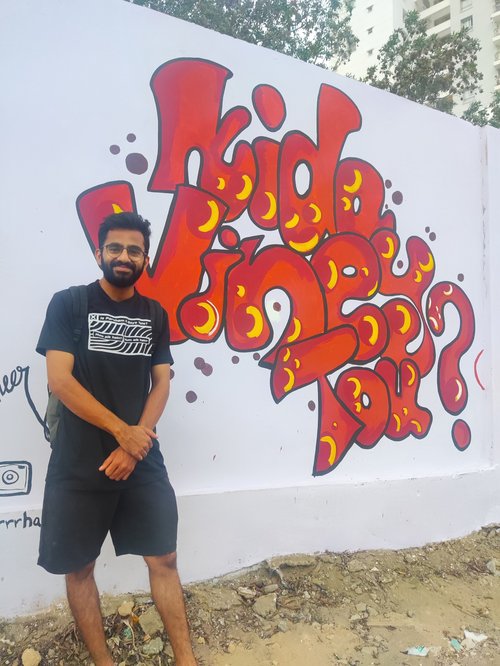
Affan Tariq, creator of Peace Walls.
Another example of peace messaging was Aman Mushaira (Peace Poetry Recital), during the brick laying ceremony of Aman Chaupal (a communal space created in Sandan Kallan to revive the old tradition of inclusive gathering spaces) garnered debate on a taboo of women's right of inheritance. The mushaira (Poetry Recital) was not exclusive to only Sunni Muslim poets but Christian and Shia poets. For the first time in the 50 years of history of Sandan Kallan, women poets also participated in the event. Other than women's right to inheritance, guests also talked about domestic violence, extremism, hate speech and child marriage in their poetry. This event was appreciated by women of Sandan Kallan because issues affecting them were publicly discussed for the first time.
These are just a few examples of how expressive art serves not only as a tool for peace messaging, but also as a medium for confronting issues that are often hushed or considered taboo, such as blasphemy allegations, harassment, honour killing, and mental health. Open dialogue on these topics can provoke fear, backlash, or social tension, on the other hand, creative expression offers a safer and more relatable way to provoke thought, build empathy, and inspire change. Through graffiti, performance, poetry, and storytelling, artists can articulate the unspeakable topics, challenge dominant narratives, and foster emotional connections rather than deepening the fissures in society and provoking backlash.
Conclusion
Creative expression remains one of the most potent tools for peacebuilding. By tapping into the emotional and imaginative aspects of art, communities can forge narratives of unity and resilience. As Pakistan continues to navigate its social and cultural complexities, creative peace messaging offers a path to healing, solidarity, and hope for a harmonious future.
